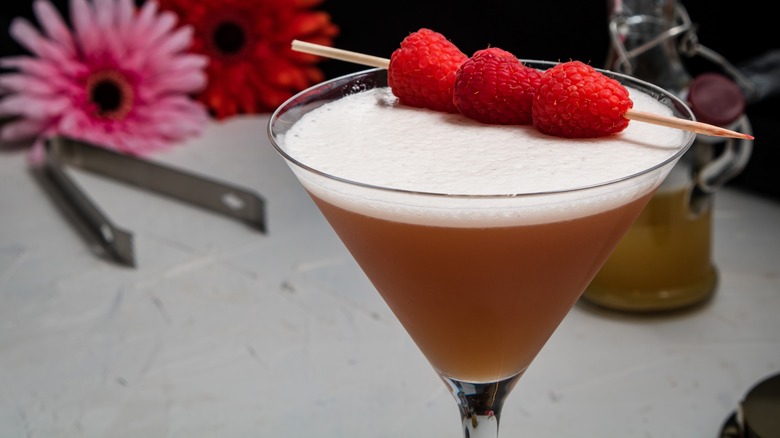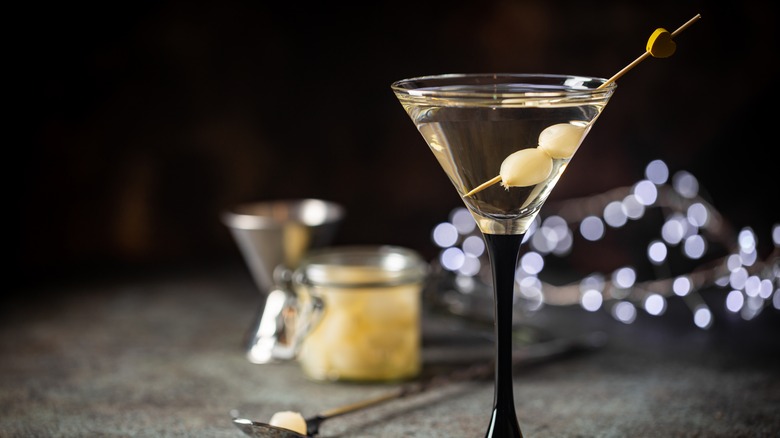What Is A French Martini And How Does It Differ From A Classic One?
If you're looking to channel your inner James Bond, there's no easier way to do so than by ordering a martini at the bar. Known to be an elegant, timeless drink, the gin-and-vermouth martini was first created in the 1880s, and it has since been recreated with dozens of delicious variations.
One popular take on the classic martini is the French martini, which, regardless of its name, does not closely resemble its classic ancestor. Unlike the simple gin (or vodka) and vermouth blend, the French martini uses vodka, pineapple juice, and Chambord (French black raspberry liqueur). It also differs from the classic martini as the French martini is shaken, while a classic martini is meant to be stirred. And, instead of an olive garnish, the French martini is traditionally topped with a lemon or raspberry garnish. The end result is a bright, fruity cocktail with a lovely pink hue and top layer of froth. However, amidst their differences, there is one key similarity between the two drinks: They are both served in a martini glass. Well, that, and they are both delicious.
Other popular variations of the classic martini
One of the best parts of concocting cocktails is how customizable they are, hence why there are hundreds of unique cocktail recipes ready to be tried. When it comes to martinis, there are lots of options to explore beyond gin and vermouth.
Of course, you have the dirty martini. In this case, "dirty" indicates the addition of olive brine or juice, as well as the speared olive garnish. This creates a savory and salty version of the classic, making it perfect to drink as a post-work, pre-dinner remedy. You can even make it extra dirty if you're a profound olive lover. You may have also heard of the Gibson, which is exactly the same as a classic martini, except it uses an onion instead of an olive as a garnish.
On the other end of the flavor spectrum reigns the sweeter, ever-popular espresso martini, which is a mixture of vodka, a shot of espresso (try instant espresso to speed up the process), and coffee liqueur, such as Kahlua. To make it extra decadent, some might opt to add simple syrup, whipped cream, or chocolate. Or, to ring in the fall season, you can even whip up a pumpkin espresso martini. The list goes on and on, from fruit-forward variations (like the French martini) to other dessert-inspired martinis you can enjoy as a night cap.


